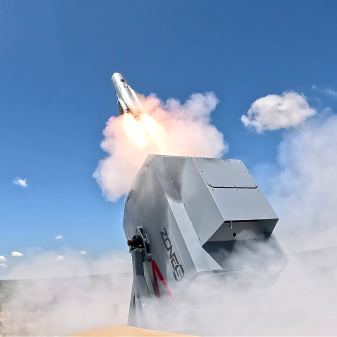Watchdog spotlights need for clear metrics to assess DIU’s impacts as it matures

Defense officials are moving to institute a new and more data-informed performance management process to ensure that the Pentagon’s Silicon Valley-headquartered innovation hub can fully morph into its third iteration and speedily deliver commercial capabilities that get after the military’s most critical operational needs, two government officials told DefenseScoop on Thursday.
This update comes on the same day that the Government Accountability Office released a report that examines the Defense Innovation Unit’s effectiveness in identifying and fielding industry-built technologies at scale.
When DIU first launched in 2015, it was originally designed to help Defense Department components team with the commercial sector and harness cutting-edge tech at a faster and less costly rate than traditional government buying methods allowed at the time. The unit’s first phase, DIU 1.0, primarily focused on building a foundational bridge between DOD and the commercial tech sector. From there, the second phase was geared toward proving that the government’s innovation problems could be solved with private sector capabilities and prototyped quickly to meet military demands.
In February 2024, the unit’s chief Doug Beck publicly unveiled his team’s vision for “DIU 3.0”, the latest phase that places a sharp focus on scaling the organization’s efforts to help close the U.S. military’s most crucial capability gaps and support contemporary operations.
However, according to the findings in GAO’s 53-page congressionally mandated report, “DIU does not yet have clear insight into whether it is making progress to achieve its 3.0 strategic goal of helping DOD solve its most critical operational gaps.”
“This is because DIU does not have a complete performance management process to assess its results. In addition, DIU has not yet aligned the goals of NSIN and NSIC — DIU’s two new components — with the strategic goal for DIU 3.0,” officials wrote, using acronyms to refer to the National Security Innovation Network and National Security Innovation Capital.
NSIN and NSIC are mechanisms DIU uses to engage and support nontraditional defense partners. The two are being integrated and streamlined in the DIU 3.0 transition.
Watchdog officials conducted this performance audit from May 2023 to February 2025. Among a variety of steps to carry out the review, they reviewed heaps of documentation and guidance in the process, and analyzed DIU-provided data about prototype agreements awarded between fiscal 2016 and 2023.
“We met with a broad range of DIU and military department officials engaged in innovation efforts for the report. We had good dialog and helpful support from all,” GAO Director William Russell told DefenseScoop on Thursday.
This performance audit ultimately suggests that, although it’s been more than a year since DIU 3.0 was announced, the unit hasn’t set official standards or reporting measures to assess the workforce’s progress toward achieving this new strategic goal.
“The bottom line is DIU showed it can quickly prototype and deliver innovative commercial technologies to the warfighter under 2.0. As DIU focuses on 3.0 efforts to deliver technology at scale, setting performance goals and metrics can help its leaders better gauge progress and course correct as needed,” Russell said.
The organization’s timeline for that course correction was not immediately clear after the report was published, but Russell confirmed that “DIU and DOD agreed with all of the report’s recommendations and [GAO plans] to monitor efforts to implement them” moving forward.
A DIU spokesperson said over email that the unit’s leadership team welcomes GAO’s recommendations and “looks forward to meeting the new administration’s goals in providing new capabilities to the warfighter at both speed and scale.”
“Since the release of the DIU 3.0 strategy in late 2023, DIU has been implementing against the plan, formally integrating the NSIC and NSIN teams into a new Commercial Operations structure, embedding personnel into the Combatant Commands, re-evaluating current and future prototype projects in close partnership with the Services and other DoD components, establishing new bodies that help coordinate on DoD-wide innovation efforts like Replicator and the Defense Innovation Community of Entities that are designed to deliver critical capability fast while helping the Department build new muscle to do so again and again, and rethinking how we evaluate and measure successes on accelerating commercial technology into the DoD,” the spokesperson told DefenseScoop.






